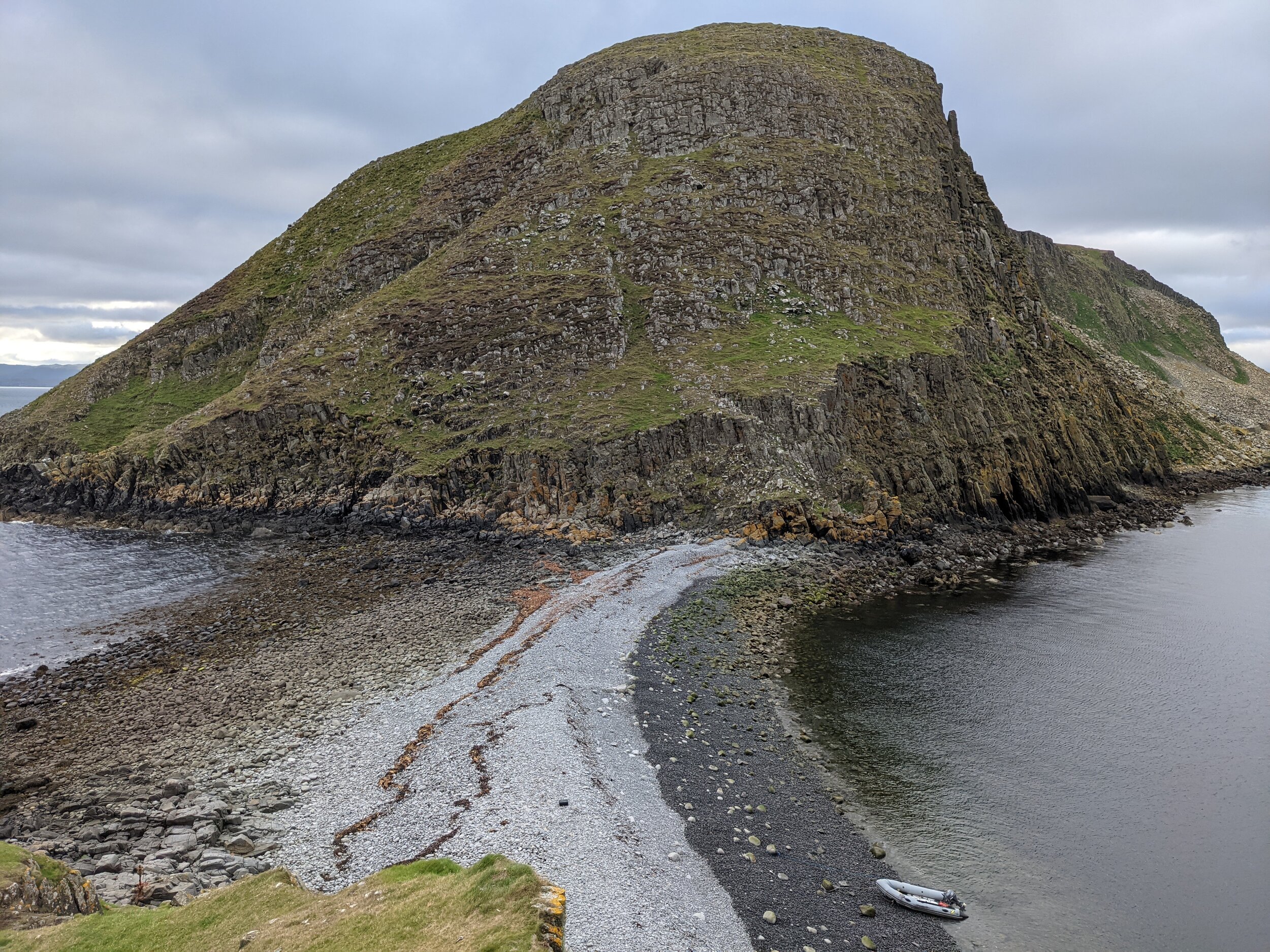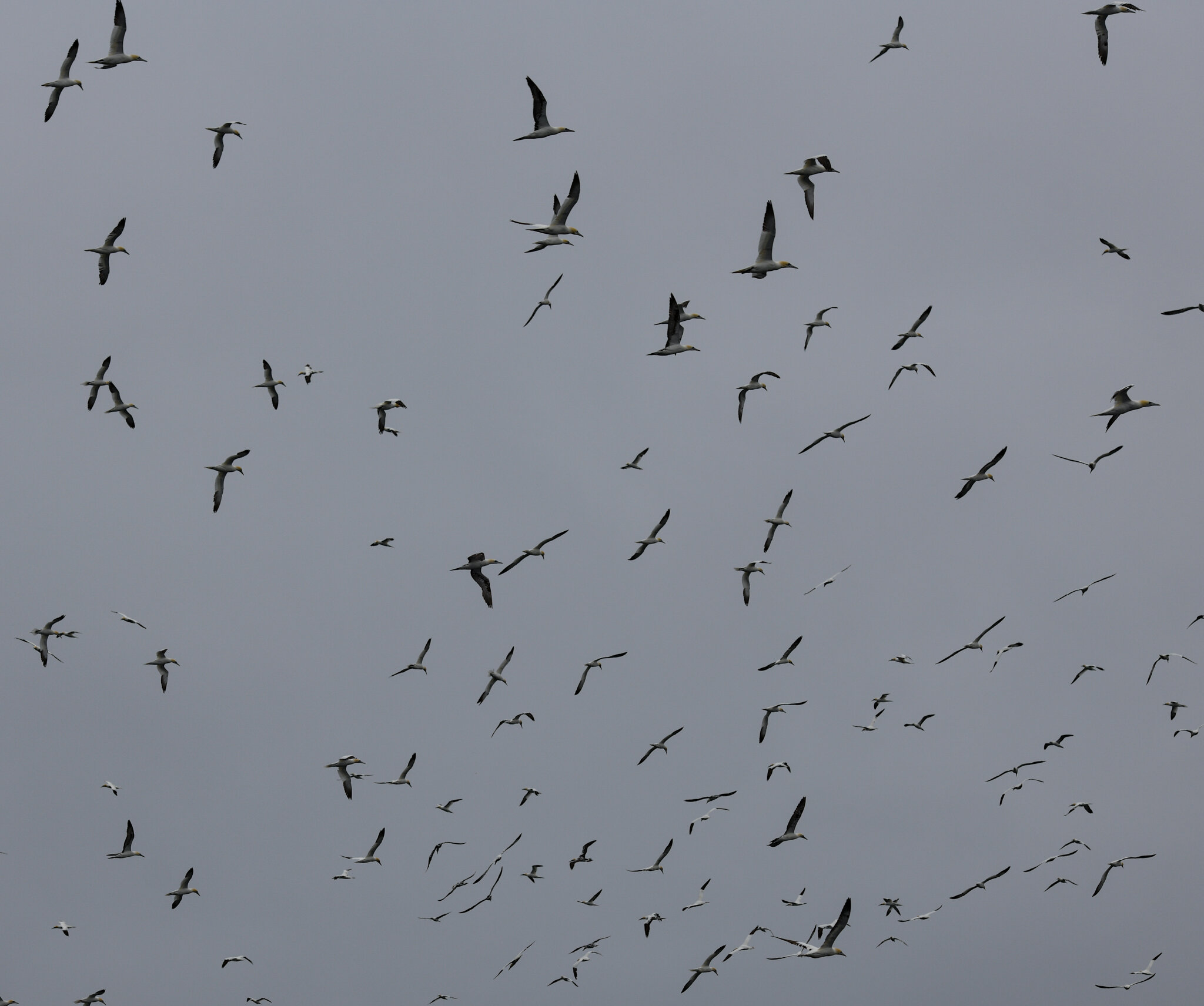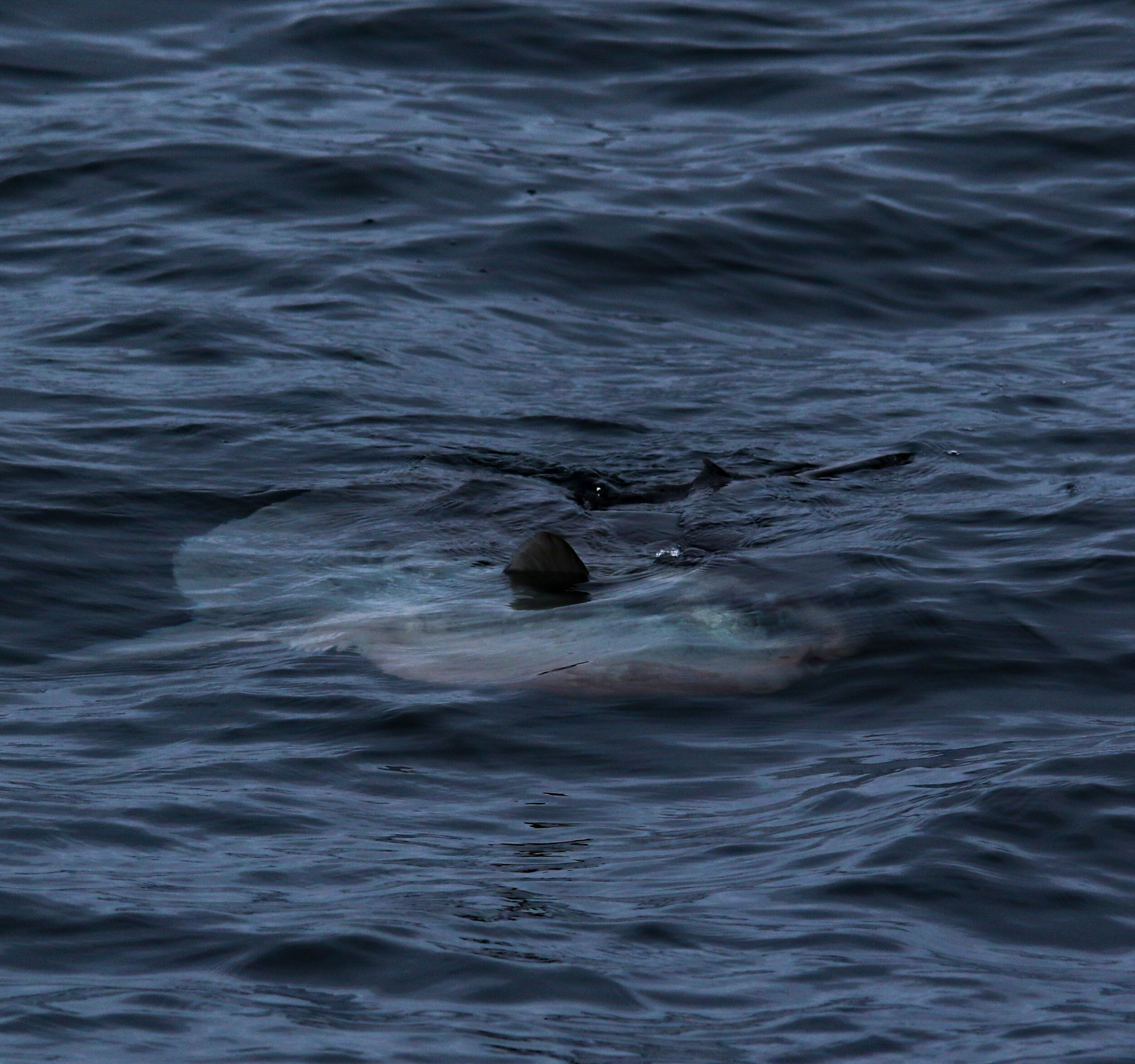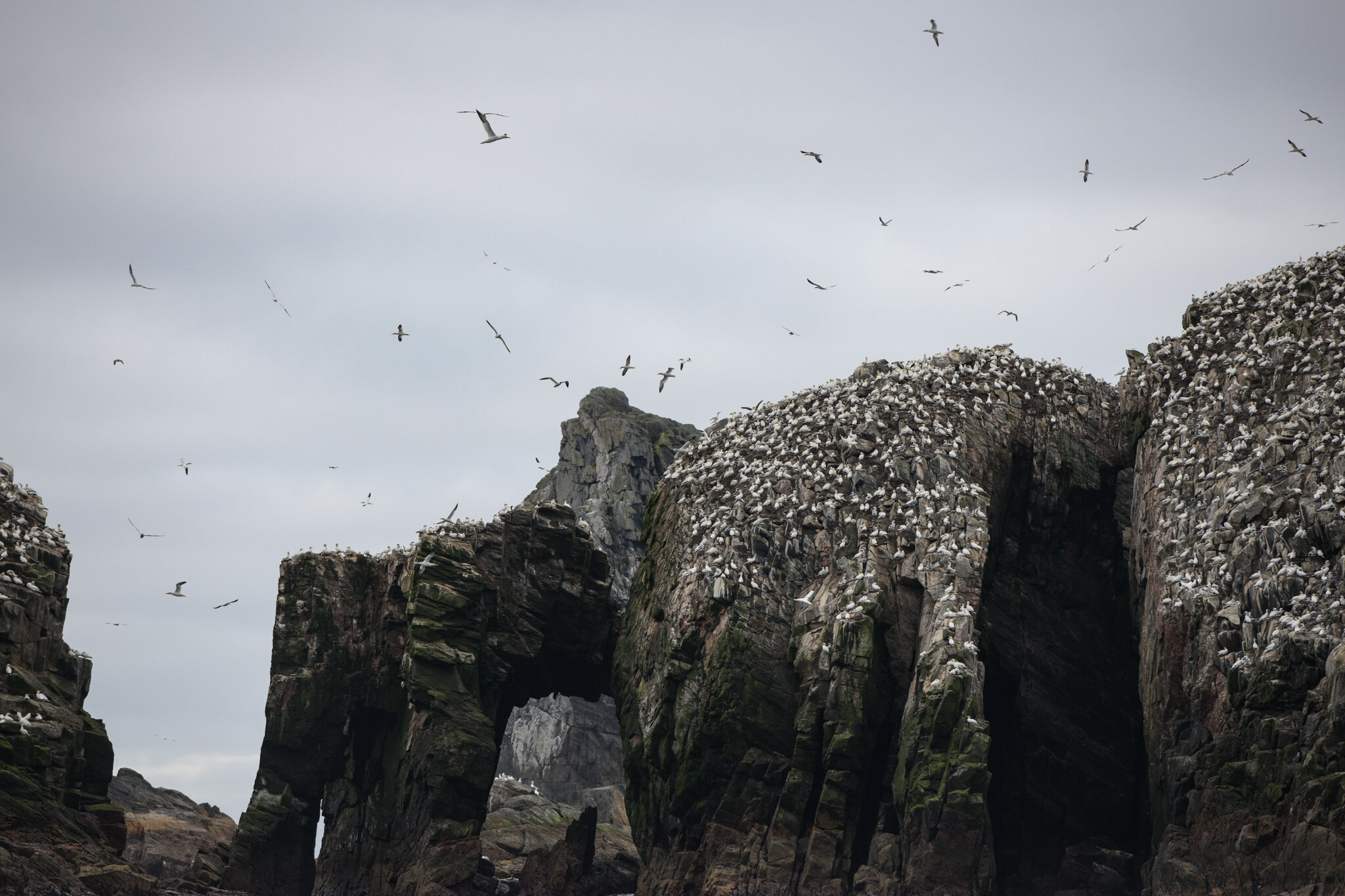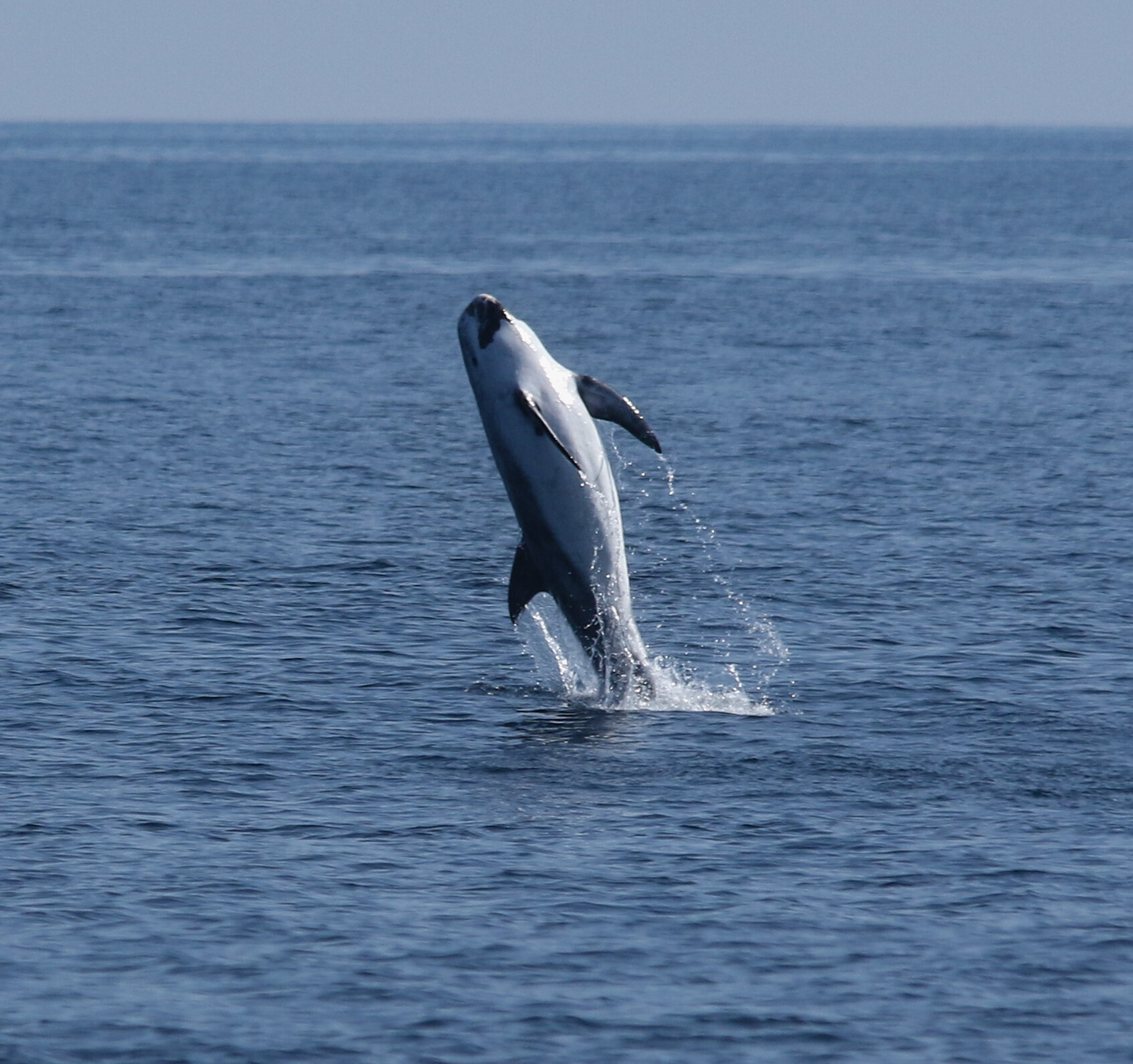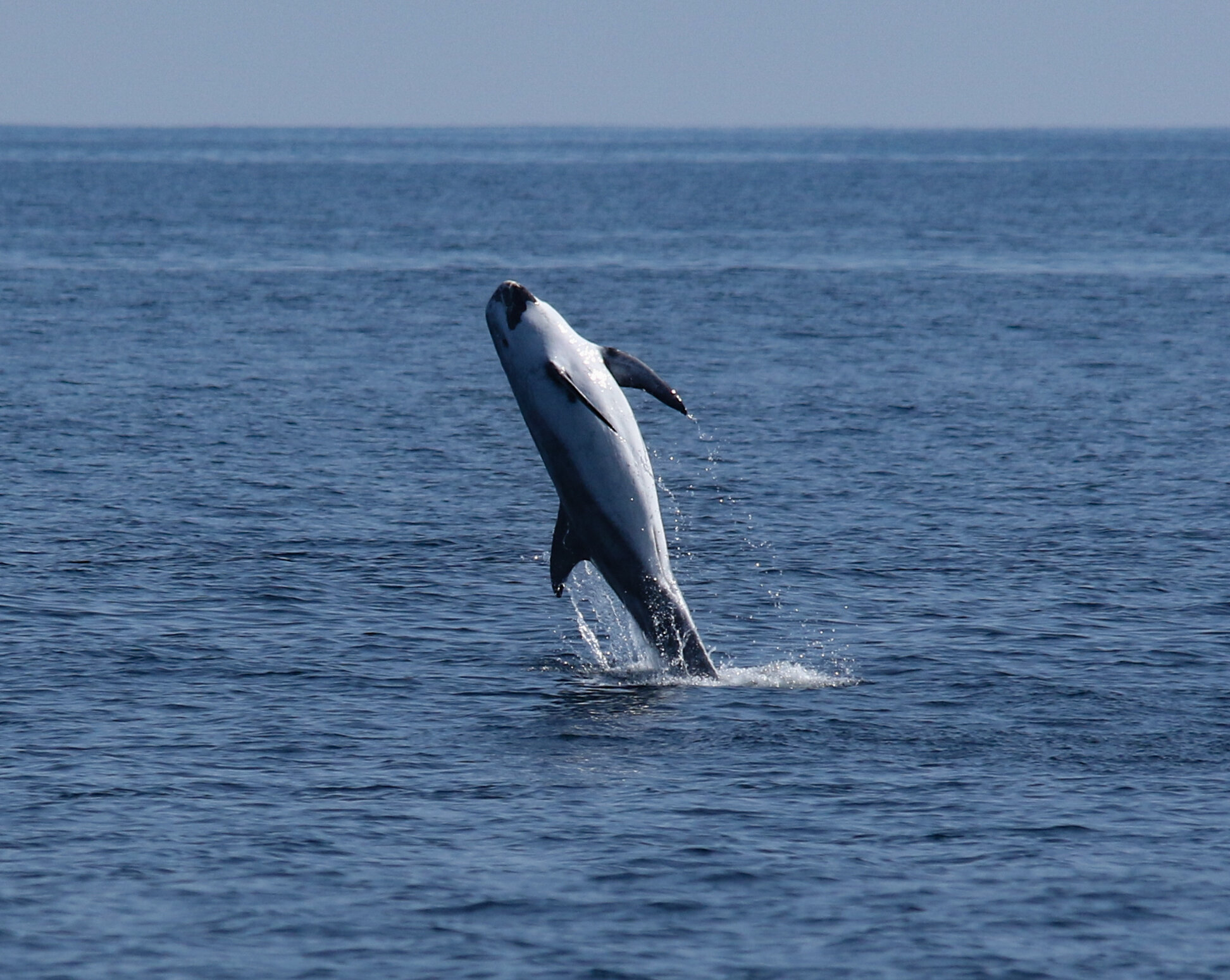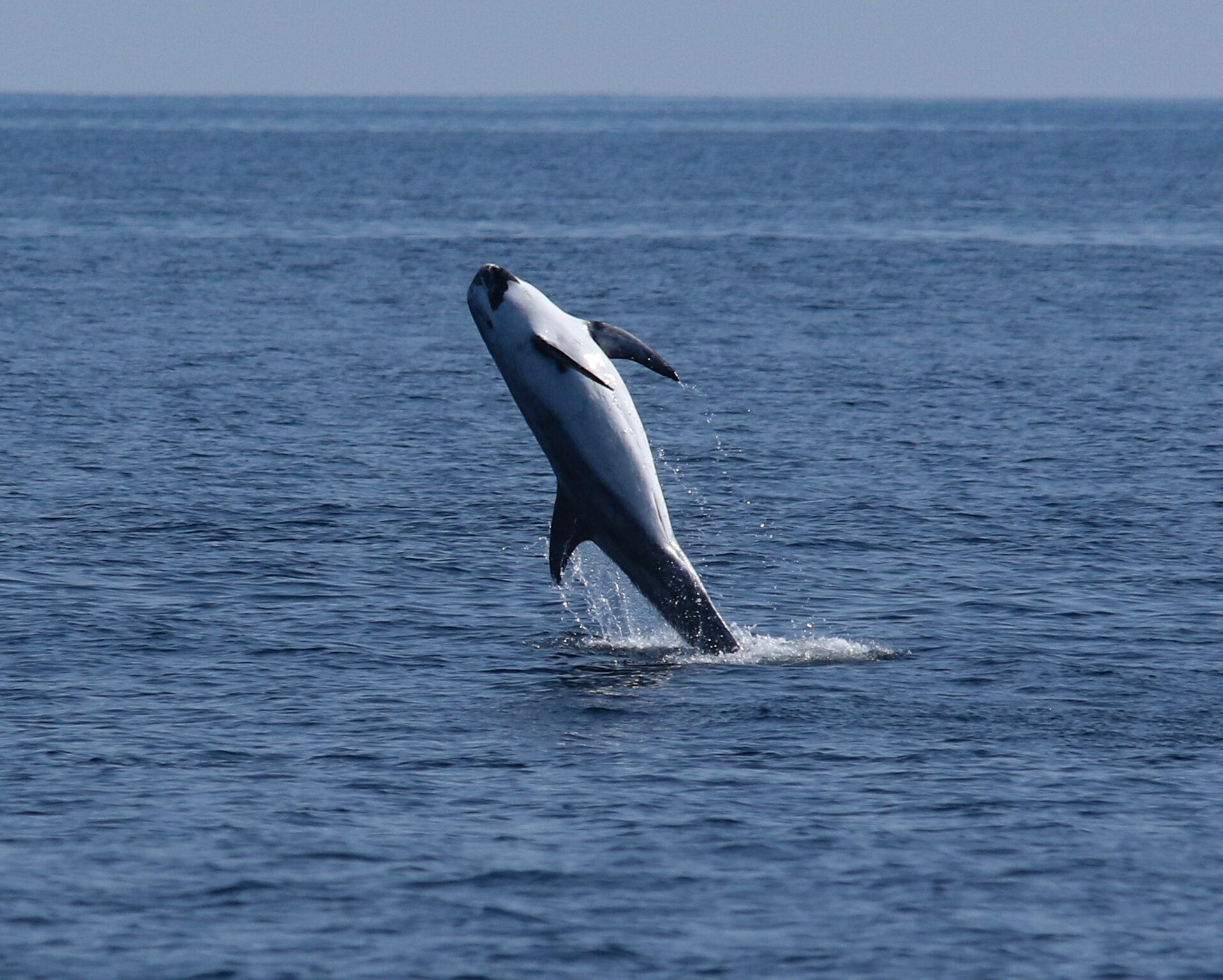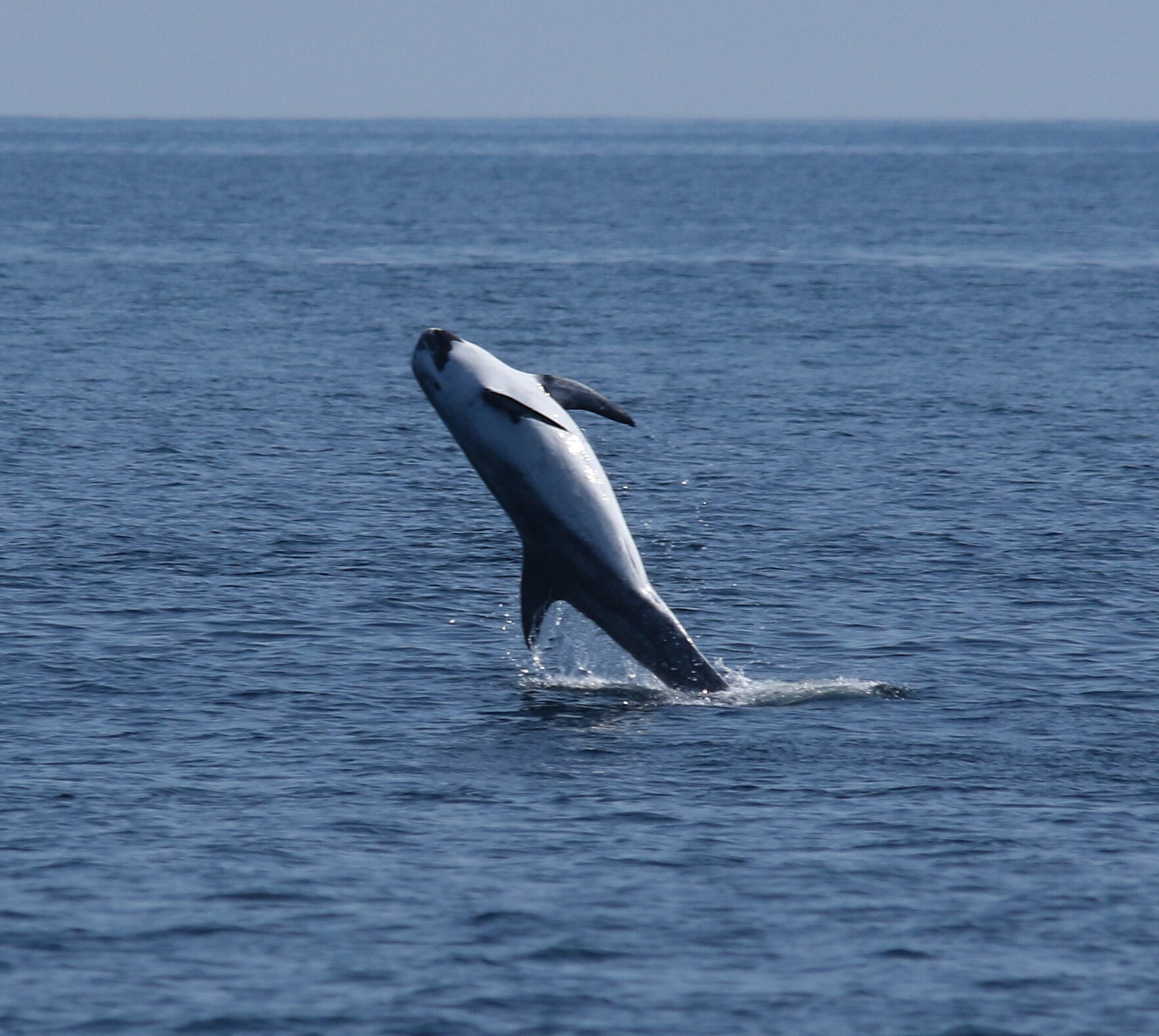Circumnavigating the Outer Hebrides on our latest expedition
ON OUR LATEST EXPEDITION ON BOARD OUR RESERACH VESSEL, SILURIAN, WE WENT WEST, SURVEYING THE WATERS AROUND THE OUTER HEBRIDES AND REACHING SOME OF THE MOST REMOTE AREAS OF THE SCOTTISH WEST COAST. OUR SCIENCE OFFICER BECKY TELLS US MORE…
The weather through August had been unusually dry and we were once again greeted by clear skies and sunshine as we prepped the boat on the first day of the expedition. With settled weather predicted for later in the next week we decided to aim to survey the waters west of the Outer Hebrides. This area is notoriously difficult to cover due to large swells that are built up over the Atlantic Ocean. We set sail, heading towards the Isle of Canna, an excellent stop over on the way to the Outer Hebrides. The next day, with strong northerly winds we decided to use the wind to our advantage and sail south, reaching the beautiful remote island of Mingulay, which is home to hundreds of grey seals. We then started our trip around the Outer Hebrides, sailing north and anchoring at the island of Benbecula, the Shiant islands and Tolsta head. We were extremely lucky to be able to anchor in such beautiful and remote places, and even luckier to be joined by common dolphin, minke whales and harbour porpoises along the way.
The next day we sailed around the Butt of Lewis, the northern tip of the Outer Hebrides, which we had been unable to do for two years. Despite a sizeable swell coming from the north, which made spotting conditions difficult, we began seeing splashes all around us. A large group of dolphins had surrounded us. Most of the dolphins were at least 600 metres away and it was initially quite difficult to identify which species we were observing. However, a small group then swam over to the vessel, and we waited with bated breath to see where they would resurface. Then out of nowhere one of the individuals launched themselves out of the water just five metres away from the bow of the boat where I was stood. It was a bottlenose dolphin, not what I was expecting. For a minute I stood there in shock. The dolphin had jumped over the height of my head and seemed to jump in slow motion, taking a good look at us. Unfortunately, it all happened to quickly for me to get a photograph, but it will live in my memory for a very long time! In total, we estimated that there was a minimum of 30 individuals, which were likely to have been part of an offshore population. As we began to make our way down the west side of the Isle of Lewis after the encounter, we experienced some engine troubles and had to make our way back to Stornoway. However, it was an easy fix, and we went back round the Butt of Lewis the next day!
It was now time to survey the waters to the west of the Outer Hebrides! We began by heading out to the Flannan Islands. The islands are 20 miles west of the Isle of Lewis and are home to THOUSANDS of northern gannets, who come here to nest. The lighthouse located on the main group of islands is also home to one of Scotland’s great mysteries. In 1900, all three lighthouse keepers disappeared without a trace in some very suspicious circumstances! After leaving the Flannan isles we sailed south aiming for an anchorage to the east of Scarp. Along the way we encountered our first Sunfish of the season! Sunfish are the second largest bony fish in the world (behind it’s close relative the southern sunfish), and must be one of the most peculiar looking marine creatures. They are huge, flat and circular and are often spotted when their dorsal fin ‘flaps’ at the surface.
We woke up the next day to some spectacular conditions and we began to sail towards St Kilda, which you could see from over 30 miles away due to the incredible visibility. Our destination though was whale rock, an underwater sea mount which rises to just five metres below the surface. It certainly lived up to its name as we began to spot whale after whale that afternoon, encountering 12 individuals, including five juveniles. That evening we arrived at the Monach Isles, another set of beautiful uninhabited islands, before a large fog bank rolled in obscuring our view. The fog bank persisted the next morning and we spent most of the next day surveying with just 100 metres of visibility! As we drew parallel with the Isle of Barra the bank began to lift and we were once again basked in sunshine as we rounded Barra head, anchoring to the east of the island. We had successfully completed our circumnavigation of the Outer Hebrides! We celebrated that evening by walking up to Barra lighthouse and watching the sunset, which was one of the most magnificent I have seen in the Hebrides.
With just two days left of the expedition, we made our way back to Tobermory, sailing south of Tiree, before watching the sunset as we sailed into the island of Lunga. Along the way we encountered harbour porpoise, common dolphins, as well as some breaching Risso’s dolphins! The last day of the expedition also brought the best conditions of the survey with some of the glassiest seas we had sailed this season. I was kept very busy as we had sighting after sighting of common dolphins. What a way to end a spectacular survey!
In total we covered over 1000 kms and collected over 87 hours of acoustic recordings. We recorded five species of cetaceans, including harbour porpoise, bottlenose dolphins, common dolphins, Risso’s dolphins and minke whales, as well as grey and common seals and a sun fish!
Tracklines showing where Silurian travelled on our latest survey
THANKS TO NATURESCOT WHO HELP FUND THE DATA COLLECTION PROGRAM ABOARD SILURIAN.
FEELING INSPIRED TO GET INVOLVED WITH OUR MARINE CONSERVATION EFFORTS? THE 2022 ARE NOW LIVE! JOIN US ON BOARD FOR YOUR CHANCE TO CONTRIBUTE TO OUR RESEARCH AND ENCOUNTER SOME OF THE AMAZING WILDLIFE WE HAVE IN OUR WATERS!


